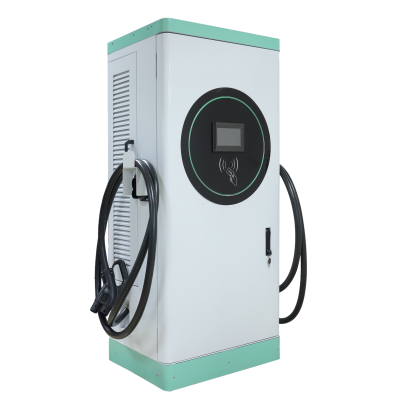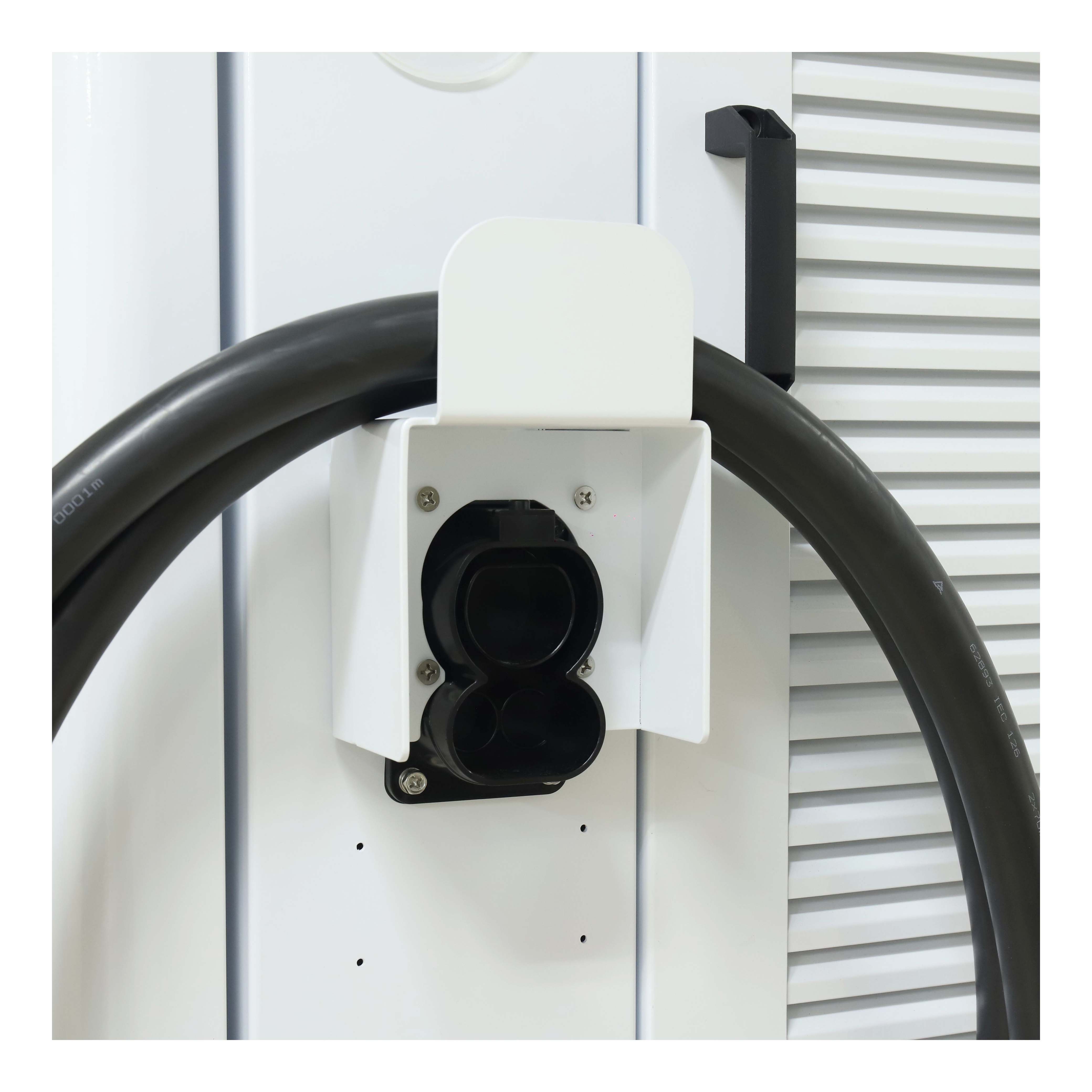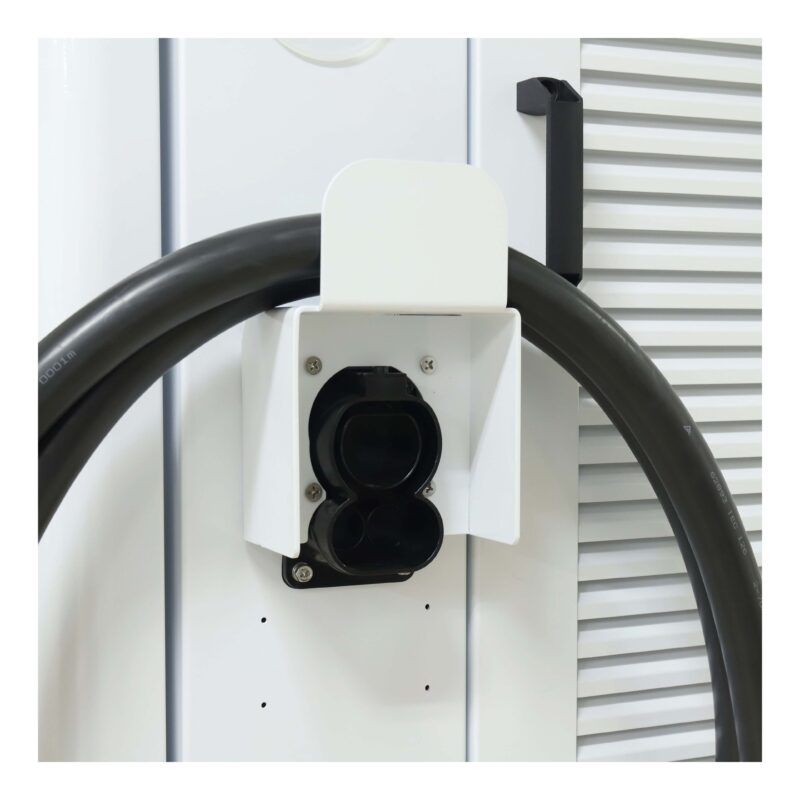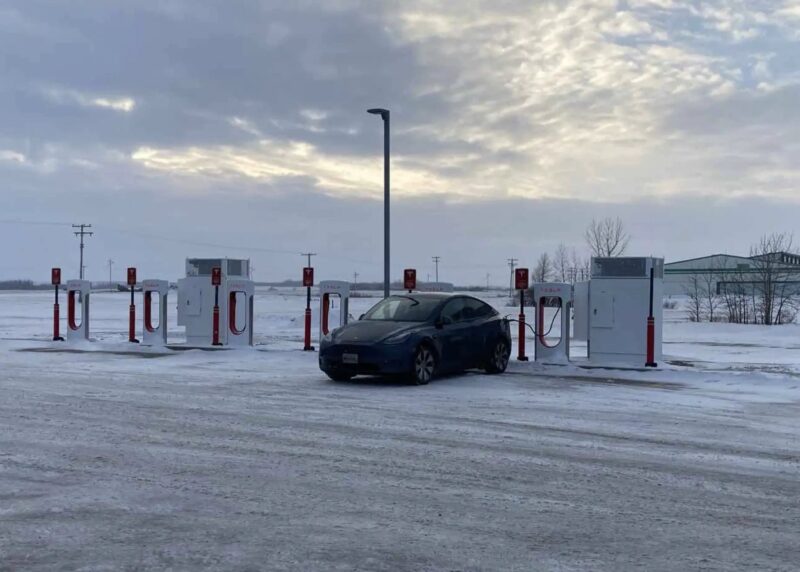









Floor-Mounted 2 Guns DC EVCharger
The 2 Guns DC fast charger for electric vehicles is designed to provide high-efficiency charging with power outputs ranging from 60kW to 240kW. It can charge multiple electric vehicles at once, making it ideal for commercial EV charging stations. With flexible charging solutions, this EV charger supports various types of electric vehicles, ensuring quick and reliable charging performance.
- IP54
- OCPP 1.6
- Full Protection
Charging Power
- Detailed Specifications
- Rated power:60kW-240kW
- Input current:95A-400A
- Gun quantity:2
- Cable length:5M or customized length
- Size(mm):1750X620X780
- Altitude:2000M
- Gun cable length:5M(customization acceptable)
- Input voltage:AC380V+20%/AC480V+20%(optional)
- Output current:0-250A
- Charging way:Charge alternately/evenly
- Interface:7" color touch screen+C card contacless card reader
- Weight:380KG
- IP level:IP54
- Standard:China standards(GB/T):20234,18487 ;urope standards(CCS): EN61851,EN62196 ;Japan standards :Chademo
- Output voltage:200-750V(200-1000V)
- Frequency:50~60 HZ
- Charging mode:Plug and play/RFID/OCPP
- Networkconnection:Standard configuration:CAN/485/Ethernet Selective:GPRS/4G/WIFI
- Operating temperature:-25°C~+50°C(Derating higher than 50°C)
- OperationHumidity:5%-90%RH,non-condensiong
- Protocol:China standards(GB/T):27930;Europe standards(CCS):DlN70121 1S0 15118;Japan standards :Chademo 2.0
Industrial design of appearance patents
- Classic floor standing appearance with stable frame design.
Safe and reliable
- Protection grade up to lP54,moisture-proof,water-proof,condensening proof,dustproof and flame retardant.
- With over and under voltage,overload,short circuit,leakage,battery anti-reverseprotection,ect.
- lK10 anti-collision level.
Rich configuration
- Supports OCPP, DLB (Dynamic Load Balancing), WIFl, LAN, 4G;
- Simultaneously having multiple payment channels for RFlD/Backend/POS machines.

Excellent Quality
- The pursuit of ultimate quality control is what we keep striving for. The internal core circuit uses military - grade components. After 5000 stringent aging tests, it ensures that every component can operate stably. The product has high current output stability, with fluctuations controlled within a very small range, effectively avoiding damage to the battery caused by unstable current and extending the battery life by more than 20%. At the same time, it has multiple over - voltage, over - current, and leakage protection functions. Once an abnormality is detected, the power can be cut off within 0.01 seconds to ensure a safe charging process.
Customized Smart Fast Charging
- We offer highly precise customization of charging modes and functions, meticulously catering to the distinct client usage scenarios. Take commercial centers, for instance, where a large number of diverse electric vehicles come for quick top - ups during peak shopping hours. We design charging modes that prioritize fast charging speeds, allowing customers to charge their vehicles swiftly while they shop. The functions are set to handle the high - density traffic of charging requests, ensuring seamless operation even when multiple cars are plugged in simultaneously.
Considerate Value - added Services
- We not only provide high - quality products but also bring you a series of considerate value - added services to create a super - value service experience for you. During the operation process, we provide you with big data analysis services. By collecting and analyzing charging data, we provide you with information such as user behavior analysis and prediction of peak and off - peak charging hours, helping you optimize your operation strategy and improve operation efficiency. Moreover, we also provide advertising investment promotion services for charging facilities to help you explore additional profit channels and increase revenue. From equipment procurement to operation management, our value - added services are everywhere, allowing you to enjoy a full - range of super - value experiences.
Explore our wider range of charging products
Our success stories
From homes to commercial spaces, from cities to remote areas, witness how we drive the growth of the EV charging sector with exceptional products and services.
EV Charging Resources

How are Disputes Resolved Over Community-Shared Charging Piles?
Conflicts over shared EV charging often stem from charger hogging, unauthorized use, equipment damage, cost disputes, and accessibility issues. Clear communication with signage, meetings, and updates minimizes misunderstandings. Technology like charging software, RFID access, and apps enables scheduling, billing, and real-time monitoring. Formal dispute processes include mediation, arbitration, or legal action. Fair policies require energy assessments, rules for usage/costs, accessibility compliance, and regular reviews. Transparency in billing and data integration enhances consumer protection, ensuring equitable charging for all residents.

What are the differences among the EV charging markets in the world’s top five regions?
The global EV charging market is marked by regional divergence. China dominates with policy-driven scale and proprietary GB/T standards, while Europe unifies under CCS2 with diverse players like Ionity and Enel X. North America’s growth is stoked by a CCS1 vs. NACS standards battle and lagging infrastructure. Emerging markets in Asia-Pacific and Latin America face infrastructure gaps but hold long-term potential. Key trends—ultra-fast charging, V2G integration, and renewable energy synergies—demand adaptive strategies. Success hinges on navigating local policies, technical compatibility, and partnerships, as standardization efforts clash with region-specific realities. Manufacturers must balance innovation with localization to thrive in this fragmented yet dynamic landscape.

Level 3 Charging: A Revolutionary Breakthrough in Electric Vehicle Charging Networks
Level 3 (DC fast charging) slashes EV charging to minutes, ideal for fleets, highways, and urban hubs. Offers 50-350kW+ power but demands grid upgrades, high costs, and compatible EVs. Future trends: Megawatt systems, wireless charging, solid-state batteries. Key factors: budget, usage patterns, and infrastructure readiness. Strategic deployment and partnerships critical.

How to Maintain EV Charging Infrastructure in Extreme Climates (-30°C to +50°C)?
Extreme temperatures (-30°C to +50°C) challenge EV charging infrastructure through material degradation, condensation, and efficiency loss. Solutions include silicone cables, UV-resistant housings, active cooling/heating systems, and quarterly maintenance tailored to climate severity. Real-world failures (e.g., northern China’s cold) highlight the need for pre-weather inspections, firmware updates, and sheltered installations. Prioritize adaptable materials and robust thermal management for reliable chargers.
get a tailored OEM solution
- Comprehensive OEM solutions
- Safe and reliable chargers
- Cost-effective options
- Suitable for all types of businesses
